Montana’s Apex Predators: BALD & GOLDEN EAGLES
When it comes to winged predators in Montana, bald eagles and golden eagles stand at the top of the heap. To qualify as an apex predator, size counts. And the accessories that come along with an eagle whose wingspreads can reach over seven feet happen to be super-sized, too. The whole package helps Montana’s eagles fill their bellies with prey both middling and large.
Taking it from the top, outsized eyes allow an eagle to see prey before the prey sees it. Their big eyes approach the size of a human’s, and coupled with the tubular shape of the eyes, they create a larger image on the retina. With more densely packed sensors as well, the retina produces a finely-grained view roughly eight powers better than our own. Eagle eyes can also detect motion better, and their enhanced color perception helps decode camouflage.

The hefty feet carry the actual weaponry, the giant, sharp, curved talons, ready to secure the prey and pierce its vital areas. They team up with a notable grip that’s an estimated ten times stronger than a human’s in pounds per square inch. This critter means business.
A final tool sits on the middle of the eagle’s face, the huge, hooked bill that allows the bird to cut into even the most toughly-packaged meal.

Together with the ridge over the eyes that seems to give both Montana’s eagles a permanent scowl, it would be tough to pass off these birds off as gentle.
But enough of the similarities, bald and golden eagles have differences, too. They show up on the menu.
Out of all the foods the bald eagle eats, the fish rate highest. That’s why baldies live in habitats near water, and why the soles of their feet have tiny scales that help it keep its grip on a slippery fish.

Bald eagles hunt by winging over the water’s surface, spotting a fish, and yanking it from the top eight inches. Using its exceptional powers of flight, it hoists this load on the go, and flies to land to dine. If the fish is a bit too heavy for this approach, the eagle may occasionally hold it tight, drop into the water, and row itself to land, looking thoroughly sodden and undignified in the process.
Birds rank second on the bald eagle’s preferred menu. These would mostly be middling-sized birds such as waterfowl, grebes, coots, and so on. People who visit the snow goose migration at Freezeout Lake have likely noticed a few bald eagles on the ice, chowing down on a large meal of snow goose. Odds are, the bald eagle with the goose will also be fighting off other baldies, pirates looking for easy grub.

Third tier of the bald eagle menu would be mammals. At times ground squirrels and prairie dogs come in handy.
The wide variety of items a bald eagle can catch is surely an advantage when it comes to survival. But just to expand the possibilities a little more, bald eagles also indulge in eating carrion. Juveniles especially utilize this form of food, easy to catch when they’re still mastering the hunt.
The golden eagle, on the other hand, makes middle-sized mammals its leading choice, even though on rare occasion it dispatches a mammal as large as an adult deer, pronghorn, or mountain goat. Day in and day out, jackrabbits, prairie dogs, and marmots are the mainstays. A habitat in grasslands, sagebrush-steppe, and alpine areas can all be rich in these, and therefore in golden eagles.

For the golden, the second tier food includes birds, particularly ring-necked pheasants in winter. (Like bald eagles, some golden eagles stay the winter and others migrate.) Golden eagles seldom steal prey from other birds, but carrion provides many a winter calorie. On occasion, both bald eagles and golden gather round a road-killed deer at once.
To go along with its flexible food choices, golden eagles use assorted hunting techniques. To list three of the most common, they sometimes fly high in the sky (on a windy or sunny day), sometimes hunt from a high perch (on a cloudy day, when flying takes more effort), and sometimes fly low over the contours of the land, to surprise a mammal that’s prone to dive for a burrow. The golden eagle has a longer tail than the bald, useful for last-minute changes in direction as it closes in on a jackrabbit.

Unfortunately, the population trends for bald and golden eagles also differ.
Raptor authority Steve Hoffman of Bozeman, the founder of Hawk Watch International, enthusiastically reports that bald eagles continue to do well. Once listed as an endangered species, it became a poster child for the program when it came off the federal list in 2007. The pesticide DDT in the environment was but one of the issues the corrective actions tackled. But the bald eagle numbers didn’t stop climbing in 2007. “It’s still increasing 5 to 7 percent a year!” says Hoffman. Improving water quality is part of that continued growth, he says.
The golden eagle has a different story. Never an endangered species (nor as hard-hit by DDT since it eats lower on the food chain), the hundreds migrating past a hawk watch atop Bridger Bowl since 1991 sustained a drop of 35 to 40 percent between 2000 and 2010. “It’s leveled off since, and last year there was a slight increase,” Hoffman says. But he can’t rest easy when no cause for the drop has been pinpointed. “There’s not enough information. Both the feds and the state are working on it,” he says. And plans to combat climate change and its effects are in the works, too.
The long-term future of both of Montana’s immense and immensely popular eagles may be clouded, but at least the remarkable return of the bald eagle may inspire whatever efforts the circumstances demand.




EVENT: Bridger Raptor Festival, Bozeman • October 4 – 6
Watch a live raptor demo. Take a family nature walk. Get your face painted. Hear raptor and related talks. The Bridger Raptor Festival draws 4,000 people annually to the Bozeman area for a smorgasbord of free activities. The participants? They range from young to old, from raptor dabblers to devotees. Here’s what’s in store.
“Sky Migrations,” a short documentary, opens the festival at Bozeman’s Ellen Theater with two of the film’s directors on hand (Friday October 4, 6:30 p.m.)
The festival continues Saturday and Sunday at Bridger Bowl Ski Area, 16 miles north of town. Here visitors both days can pick activities from 10 a.m. to 3 p.m. Saturday the day closes with Oktoberfest, a mix of beer, food and music from 3 until 6.
By design the festival falls during peak raptor migration. Golden eagles are the superstars here, with 1400 of the migrants typically taking advantage of the Bridger Ridge’s updrafts between September 2 and October 31. A vigorous two-mile hike to the helipad above the ski area leads visitors up 2,200 feet to spectacular views, a chance to join the official observers at Bridger Hawk Watch, and the possibility of spotting raptors. Binoculars and warm layers recommended.
WATCH: "Golden Eagle Release" (2016)
Robert Domenech of Raptor View Research Institute releases a recently tagged golden eagle on the Rocky Mountain Front in Montana. Rob has tagged and studied the movement and lives of hundreds of eagles through his non-profit organization, gaining valuable insight into the lives and ecology of our top avian predators.
For more information: www.bridgerraptorfest.org. or call Bridger Bowl (406) 586-1518 or (800) 223-9609.



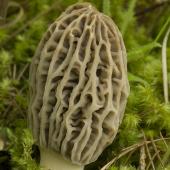
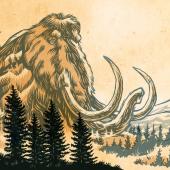
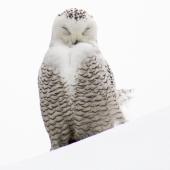
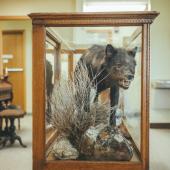
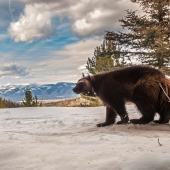
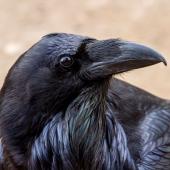

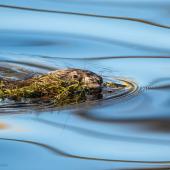
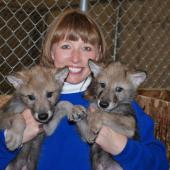
Leave a Comment Here